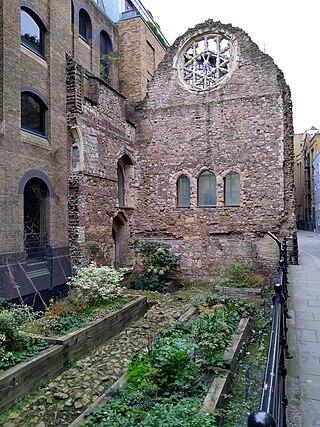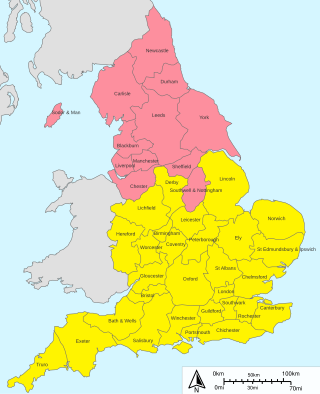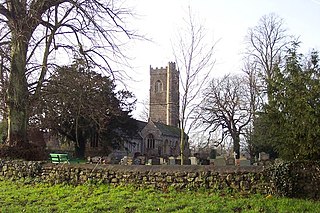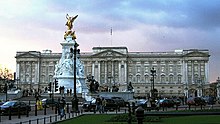
The archbishop of Canterbury is the senior bishop and a principal leader of the Church of England, the ceremonial head of the worldwide Anglican Communion and the bishop of the Diocese of Canterbury. The current archbishop is Justin Welby, who was enthroned at Canterbury Cathedral on 21 March 2013. Welby is the 105th person to hold the position, as part of a line of succession going back to the "Apostle to the English" Augustine of Canterbury, who was sent to the island by the church in Rome in 597. Welby succeeded Rowan Williams.

A palace is a grand residence, often serving as a royal residence or the home for a head of state or some other high-ranking dignitary, such as a bishop or archbishop. The word is derived from the Latin name palātium, for Palatine Hill in Rome which housed the Imperial residences.

The Palace of Whitehall – also spelled White Hall – at Westminster was the main residence of the English monarchs from 1530 until 1698, when most of its structures, with the notable exception of Inigo Jones's Banqueting House of 1622, were destroyed by fire. Henry VIII moved the royal residence to White Hall after the old royal apartments at the nearby Palace of Westminster were themselves destroyed by fire. Although the Whitehall palace has not survived, the area where it was located is still called Whitehall and has remained a centre of the British government.

Winchester Palace was a 12th-century bishop's palace that served as the London townhouse of the Bishops of Winchester. It was located in the parish of Southwark in Surrey, on the south bank of the River Thames on what is now Clink Street in the London Borough of Southwark, near St Saviour's Church. Grade II listed remains of the demolished palace survive on the site today, designated a Scheduled Ancient Monument, under the care of English Heritage.

This article traces the historical development of the dioceses and cathedrals of the Church of England. It is customary in England to name each diocese after the city where its cathedral is located. Occasionally, when the bishop's seat has been moved from one city to another, the diocese may retain both names, for example Bath and Wells. More recently, where a cathedral is in a small or little-known town or city, the diocesan name has been changed to include the name of a nearby larger city: thus the cathedral in Southwell now serves the diocese of Southwell and Nottingham, and Ripon Cathedral was in Ripon and Leeds from 1999 until 2014. Cathedrals, like other churches, are dedicated to a particular saint or holy object, or Christ himself, but are commonly referred to by the name of the city where they stand. A cathedral is, simply, the church where the bishop has his chair or "cathedra".
An official residence is the residence of a head of state, head of government, governor, religious leader, leaders of international organizations, or other senior figure. It may be the same place where they conduct their work-related functions.
The Bishop of Lichfield is the ordinary of the Church of England Diocese of Lichfield in the Province of Canterbury. The diocese covers 4,516 km2 of the counties of Powys, Staffordshire, Shropshire, Warwickshire and West Midlands. The bishop's seat is located in the Cathedral Church of the Blessed Virgin Mary and Saint Chad in the city of Lichfield. The Bishop's residence is the Bishop's House, Lichfield, in the cathedral close. In the past, the title has had various forms. The current bishop is Michael Ipgrave, following the confirmation of his election on 10 June 2016.

The Bishop of Llandaff is the ordinary of the Church in Wales Diocese of Llandaff.

William Howley was a clergyman in the Church of England. He served as Archbishop of Canterbury from 1828 to 1848.
In canon law the confirmation of a bishop is the act by which the election of a new bishop receives the assent of the proper ecclesiastical authority.
Bishop's Palace may refer to the official residence of any bishop, such as those listed in the Category:Episcopal palaces.

The Bishop of Winchester is the diocesan bishop of the Diocese of Winchester in the Church of England. The bishop's seat (cathedra) is at Winchester Cathedral in Hampshire.
Anthony Kitchin, also known earlier as Dunstan Kitchin, was a mid-16th-century Abbot of Eynsham Abbey and then, Bishop of Llandaff in the Catholic Church under Henry VIII and eventually under Mary. He Seems to have had no qualms about the breach with Rome under Henry VIII, the Protestant Reformation under Edward VI and though reconciled as a Catholic under Mary I, accepted to serve when Protestantism returned under Elizabeth I.

Mathern is a historic community (parish) and village in Monmouthshire, south east Wales, about 3 miles (4.8 km) south west of the town of Chepstow, close to the Severn estuary, the Bristol Channel and the M48 motorway. The village is designated as a Conservation Area. It is now bisected by the motorway, which passes over the road through the village, with the original village located to the south and the more recent development, known as Newton Green, to the north.
The Archbishop of Dublin is the head of the Archdiocese of Dublin in the Catholic Church, responsible for its spiritual and administrative needs. The office has existed since 1152, in succession to a regular bishopric since 1028. The archdiocese is the metropolitan see of the ecclesiastical province of Dublin, and the archbishop is also styled the Primate of Ireland. The cathedral church of the archdiocese is Saint Mary's Pro-Cathedral in Dublin city, although the Church formally claims Christ Church as its cathedral, and the archbishop's residence is Archbishop's House in Drumcondra.
Events from the 1100s in England.
Mervyn George Haigh was an Anglican clergyman who served as the third bishop of the restored see of Coventry in the modern era and the 97th Bishop of Winchester in a long line stretching back to the 7th century.

Mathern Palace is a Grade I listed building in the village of Mathern, Monmouthshire, Wales, located some 3 miles (4.8 km) south-west of Chepstow close to the Severn Estuary. Between about 1408 and 1705 it was the main residence of the Bishops of Llandaff. After falling into ruin, it was restored and its gardens laid out between 1894 and 1899 by the architectural writer Henry Avray Tipping. The garden surrounding the palace is listed on the Cadw/ICOMOS Register of Parks and Gardens of Special Historic Interest in Wales.

In British usage, the term townhouse originally referred to the opulent town or city residence of a member of the nobility or gentry, as opposed to their country seat, generally known as a country house or, colloquially, for the larger ones, stately home. The grandest of the London townhouses were stand-alone buildings, but many were terraced buildings.















